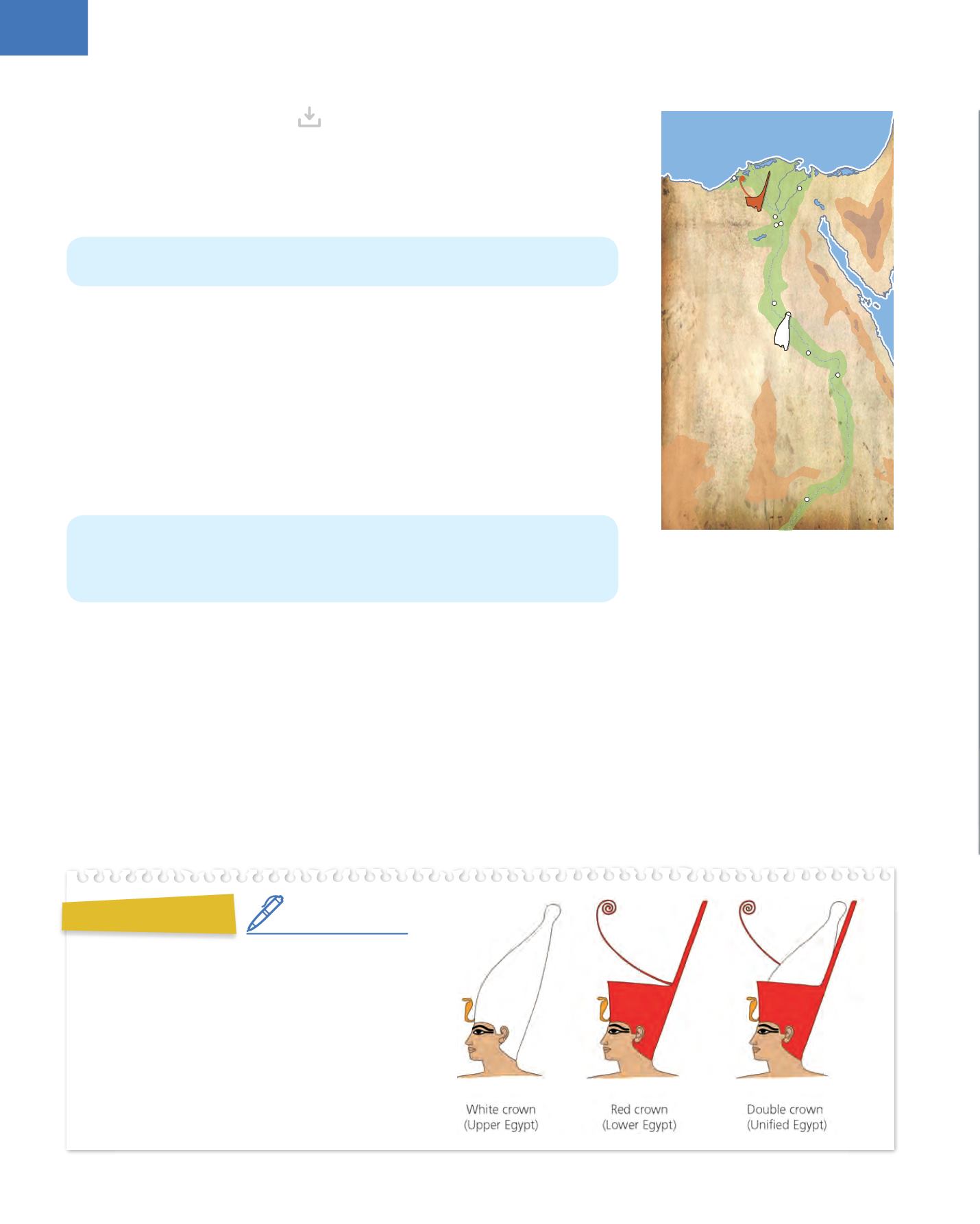
3
54
History
3. ANCIENT EGYPT
On the banks of the Nile in north east Africa, a fascinating civilisation developed.
Many things have been discovered about its history and culture by
Egyptologists
17
.
3.1. Geographical environment
During the summer the river floods due to the torrential rains that fall in the upper
course.
The Mediterranean Sea to the north and the desert which surrounds it, protected
Egypt up to a certain point, from external enemy attacks.
3.2. Historical context
During the fourth millennium B.C., Neolithic villages built hydraulic works (canals
and dykes) in the Nile valley. The water was used for agricultural purposes and these
settlements eventually grew into cities.
Egypt has a long history (almost three thousand years), which is divided into four main
periods: the
Old Kingdom
, the
Middle Kingdom
, the
New Kingdom
and the
Late
Period
.
The ruler of Egypt was called a
pharaoh
and was considered a god. He held absolute
religious and political power. He governed with the help of government officials, such
as
viziers
(or ministers) and
nomarchs
(provincial governors, called nomes), priests
and military leaders.
The position of pharaoh was passed down to members of the same family or
dynasty
.
Until
Alexander the Great
conquered this territory in the 4th century B.C., there was
a succession of 31 dynasties in Egypt.
Did you know?
In Egypt, both the kings and the gods wore
crowns as a symbol of their power. The crowns
had a special significance, especially the white
and the red crown, which represented the two
regions which Egypt was divided into (Upper and
Lower Egypt).The double crown – a red crown
inside a white one – was attributed with a magic
power which guaranteed the unification of Upper
and Lower Egypt.
17
Egyptologist:
a person who
specialises in the study of Ancient
Egypt
Nile
Nile
Sinai
Peninsula
Valley of
the Kings
Red Crown of the
King of Lower Egypt
White Crown of the
king Upper Egypt
Mediterranean Sea
Mar
Rojo
U
PPER
E
GYPT
L
OWER
E
GYPT
N
UBIA
Avaris
Memphis
Gizeh
Tinis
Tebas/Luxor
Abu Simbel
Sakkara
Tell el-Amarna
Alexandria
The river
Nile
crosses the large Sahara Desert (red lands), fertilising the narrow strip
of land which it flows across (black lands).
Some of these cities took control of others and, in time, two kingdoms were created:
Upper Egypt
, halfway along the river, and
Lower Egypt
, at the river mouth in the
north. In around 3100 B.C., the legendary king
Narmer
or
Menes
unified Upper
and Lower Egypt.


